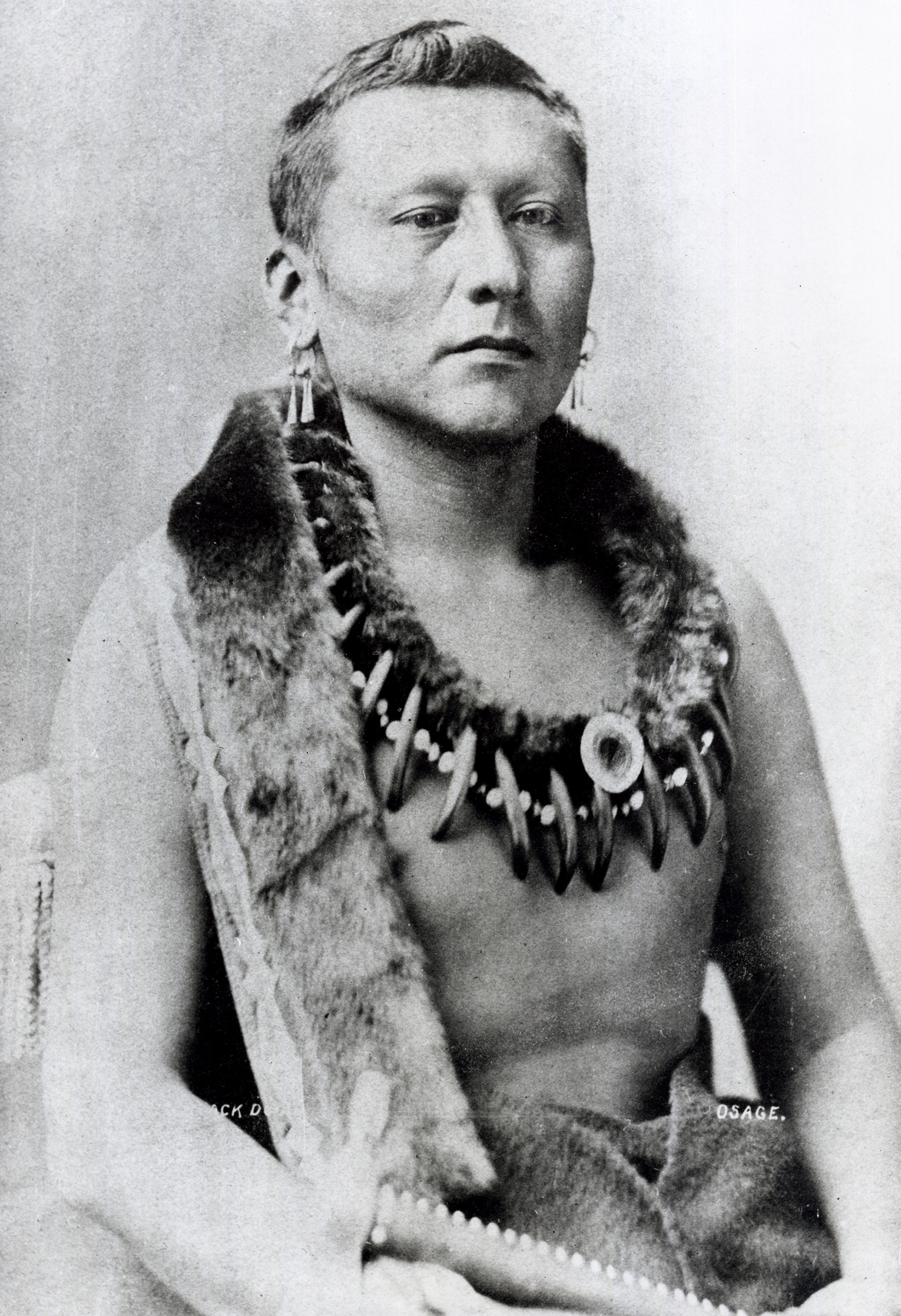BLACK DOG (ca. 1780–1848).
The Osage chief Black Dog was born circa 1780 near St. Louis, Missouri. His village, Pasuga (or Big Cedar), was located at present Claremore, Oklahoma. His original name, Zhin-gawa-ca (or Shinka-Wah-Sa), meant Dark Eagle or Sacred Little One. He possibly earned the designation Manka-Chonka, or Black Dog, against the Comanche. At a Fort Gibson meeting during March 1833, he was called Shonkah-Sabe, or Black Horse.
An Osage trail in Kansas and Oklahoma was known as the Black Dog Trail. Engineered by Black Dog, it extended from east of present Baxter Springs, Kansas, to the Great Salt Plains in Alfalfa County, Oklahoma. Under his leadership a substantial proportion of the Osage hunted west to the Salt Plains and the upper Arkansas River. It was not uncommon for members of his band to raid, hunt, and trade as far away as Mexico and Santa Fe.
Portraits of Black Dog were painted by artists George Catlin in 1834 and John Mix Stanley in 1843. Blind in his left eye, he stood around seven feet tall and weighed an estimated three hundred pounds. His only son, also called Black Dog, was born in 1827 and died in 1910. Black Dog was a contemporary of and shared power with chiefs Claremore and Pawhuska. His political control perhaps extended over a third of the tribe. He was on generally friendly terms with U.S. authorities and occasionally ordered his braves to hunt and scout for American troops. Black Dog died at the present site of Claremore, Oklahoma, on March 24, 1848.
See Also
Browse By Topic
American IndiansExplore
PeopleAmerican Indian
Military
Public Servants and Civic Leaders
Learn More
Louis F. Burns, A History of the Osage People (Fallbrook, Calif.: Ciga Press, 1989).
George Catlin, Letters and Notes on the Manners, Customs, and Conditions of the North American Indians, Vol. 2 (1841; reprint, Minneapolis: Ross and Haines, 1965).
John Joseph Mathews, The Osages: Children of the Middle Waters (Norman: University of Oklahoma Press, 1961).
Tillie Karns Newman, The Black Dog Trail (Boston: Christopher Publishing House, 1957).
Citation
The following (as per The Chicago Manual of Style, 17th edition) is the preferred citation for articles:
Burl E. Self, “Black Dog,” The Encyclopedia of Oklahoma History and Culture, https://www.okhistory.org/publications/enc/entry?entry=BL002.
Published January 15, 2010
© Oklahoma Historical Society


